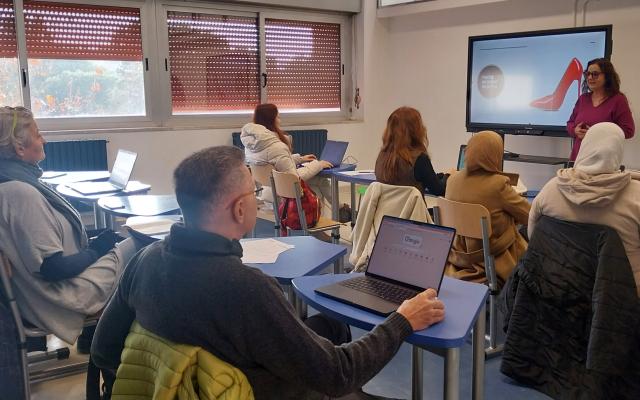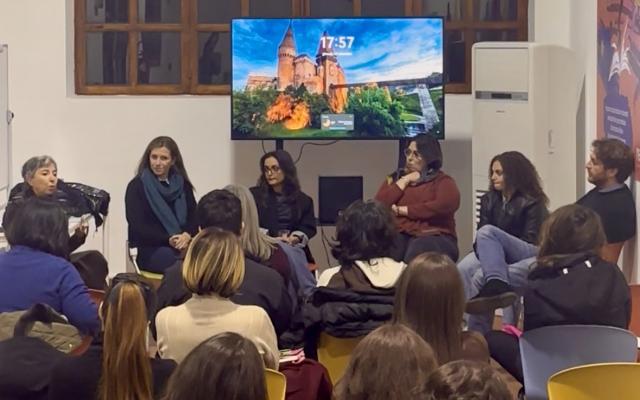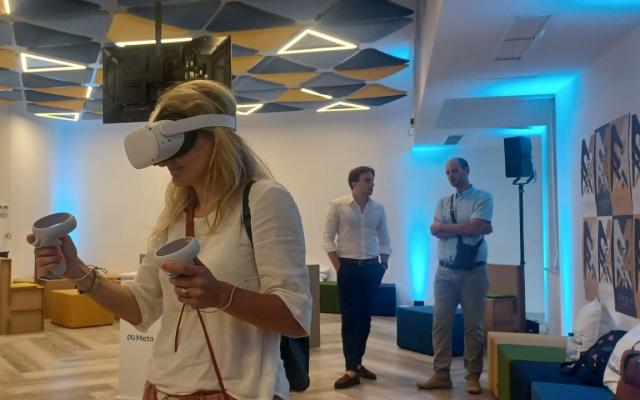Ideas for museums, a debate at Binario F with Vagone FMD
The Metaverse holds great promise for cultural activities. It can be used to promote museums, develop new languages, and bring people closer to our artistic and cultural heritage, providing new immersive experiences for all citizens. Here is Onelia Onorati’s summary of the lively brainstorming session at the 5th meeting (Wednesday, December 7) on the Metaverse for cultural activities and museums, part of Programme Vagone FMD. From 01 to 100 in the Metaverse.
INTRODUCTORY SESSION
Mirta Michilli, Director General, Fondazione Mondo Digitale – Both IT companies and finance groups are making significant investments in the Metaverse. We are interested in its social implications, the work opportunities, so we invited the large companies working on this technology. We invite you to imagine the opportunity for development and progress that can be opened up by this new system of technology.
Costanza Andreini, Public Policy Manager Italy, Meta – Together with the FMD, we have decided to promote this series of debates for all interested parties, as Meta is one of the protagonists of the metaverse, but not the only one.
Massimo Canducci, Chief Innovation Officer, Engineering – It will be possible to create new social media and extend old ones, but it will also be possible to enjoy new experiences such as booking a virtual vacation and enjoying it without the physical element. We cannot overlook this phenomenon and must remain updated on new technology like artificial intelligence, blockchain, and virtual and augmented reality. How? By learning about it through events and demos.
Bartolomeo Pietromarchi, Director, MAXXI Arte – For our Metaverse proposal, artists worked with engineers to develop a technological dimension for works of art. We believe that artistic experience is necessarily physical. The metaverse is not a substitute and should be used to create different concepts in virtual space. Our project calls for the development of a virtual floor on the facades of the Maxxi L’Aquila and on the square in front of Maxxi Roma. The aim is to emerge people into these works, performances, and videos. In particular, there were simultaneous on-line happening and replicable experiences. Then, we developed an app to bring people closer to art works.
SPEAKERS
Anna Laura Orrico, Deputy, Culture, Science and Education Commission – immersive experience are always very interesting. I would like to address two issues. First of all, the co-creation of digital content to educate the young generations. It would be interesting if companies and public institutions were to work to allow young men and women to visit cultural sites. It could create a synergy between reality and metaverse. Secondly, technology provides accessibility and fruition of our cultural heritage for those who cannot access it directly.
Antonio Caso, Deputy, - I call for the creation of a unitary Internet, rather than divided words. For this, companies will have to collaborate together.
Isabella Toffoletti, Special Inter-sector Projects, Rome Cultural Heritage Authority – The metaverse is far better and more immersive than it used to be. It is important that we develop products and technology that is custom-tailored to specific needs and not too self-referential.
Laura Petacco, Rome Cultural Heritage Authority – A physical person must always be the intermediary and the actor for the activation of emotions and positive processes. Virtual reality is important if it is used for sites that cannot be accessed due to specific conditions, but in the development of projects it must remain anchored to reality and harmonize with the museum. It would be important to create a framework of collaborations, at a normative level, to authorize and validate material.
Alessandro Pandozy, Engineering – the key to the success of the metaverse is attention to service design. We need to understand who the potential users are to improve, because applications are often more geared to those who make them, than those who use them.



